Abstract
Combinations of gentamicin with cefotaxime, moxalactam, and ceftazidime were tested against 43 bacterial strains, most of them blood isolates. With an interaction index of less than or equal to 0.5 as borderline, synergism was demonstrated against 30 to 40% of the strains by the fractional inhibitory concentration index and against 50 to 70% by the fractional bactericidal concentration index. The reproducibility of the index was within +/- 0.2 for two-thirds of 40 repetitive assays and within +/- 0.4 to 0.5 for all of these assays. Similar results were obtained when netilmicin was substituted for gentamicin. The killing curve system for studying antibiotic synergism was standardized to give results comparable to those obtained with the interaction index. This was achieved when one-half of a previously determined minimum bactericidal concentration was used for single drugs and the amount of antibiotic was at least halved again when drugs were used in combination. An initial bacterial concentration of 10(5) to 10(6) colony-forming units per ml is recommended. Given these conditions, synergism could be defined as a 2-log 10 or more decrease in viable count given by both drugs together, as compared with the more active of the pair after 24 h. Prediction of killing curve results could then be obtained with the fractional bactericidal concentration index. When cephalosporins and gentamicin were combined from the start, the beta-lactam antibiotics were less susceptible to inactivation, as demonstrated in time-killing assays. If one of the antibiotics were added after 24 h, synergism was not demonstrable. The results indicate that the new cephalosporins may be advantageously combined with aminoglycosides.
Full text
PDF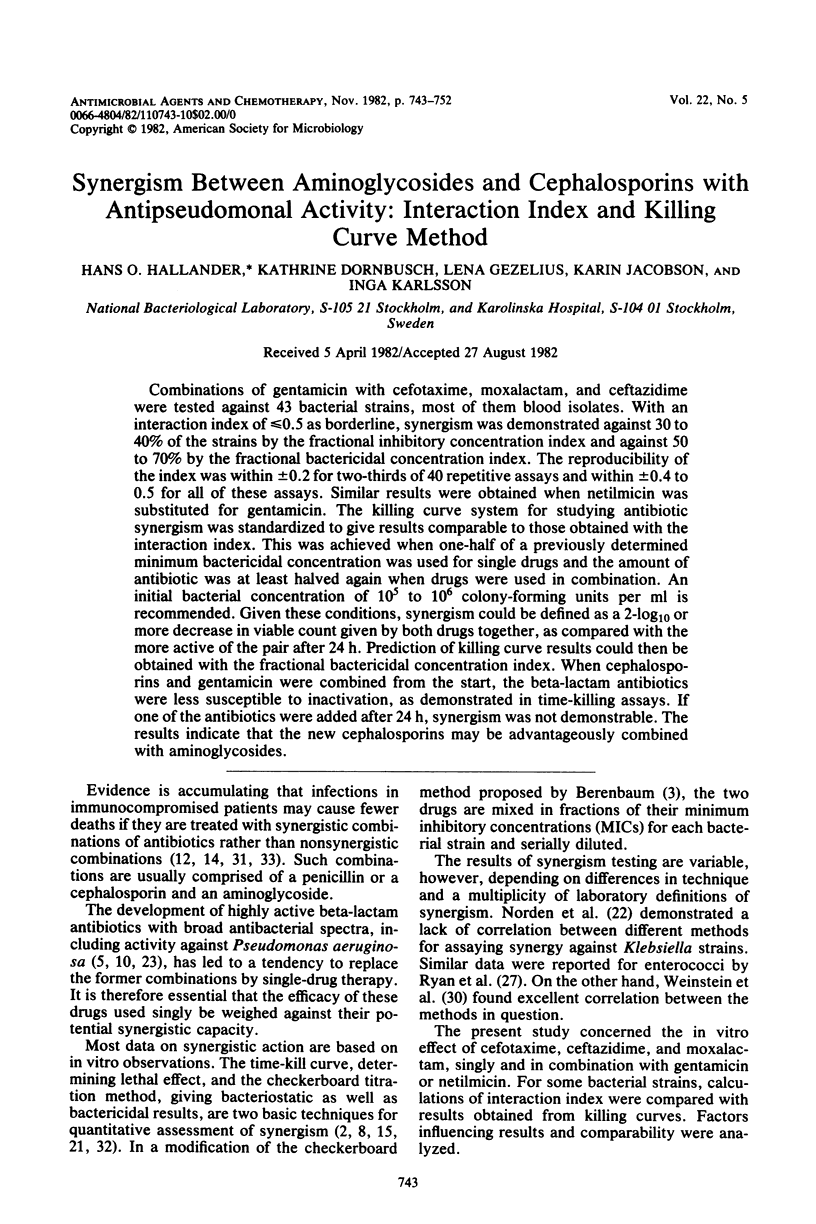
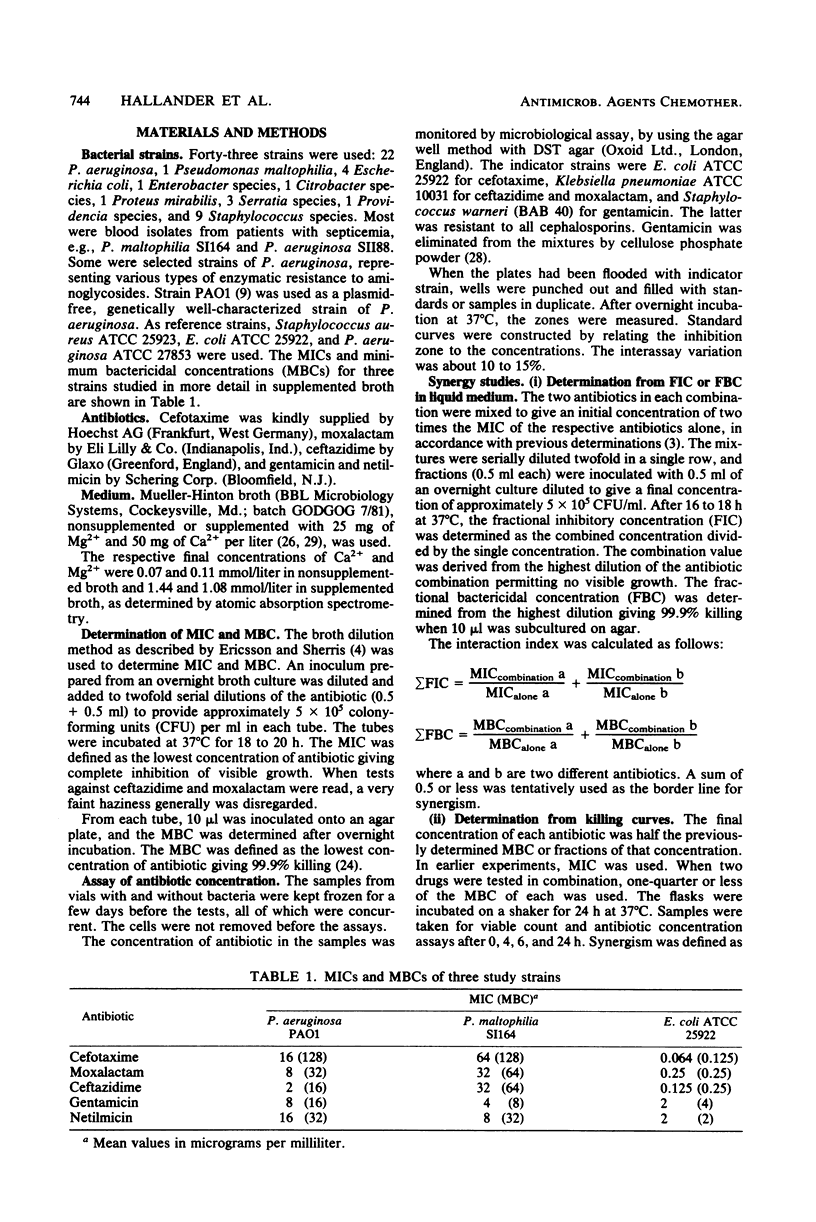
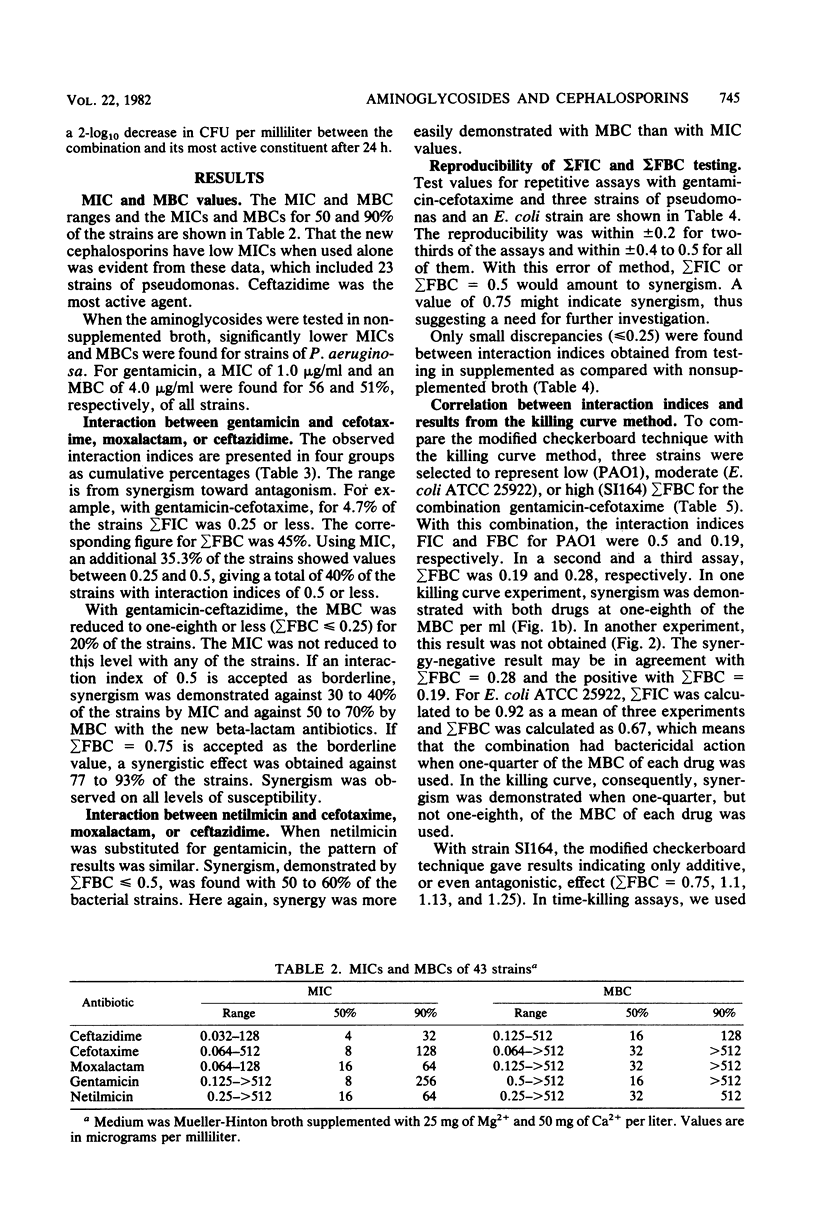
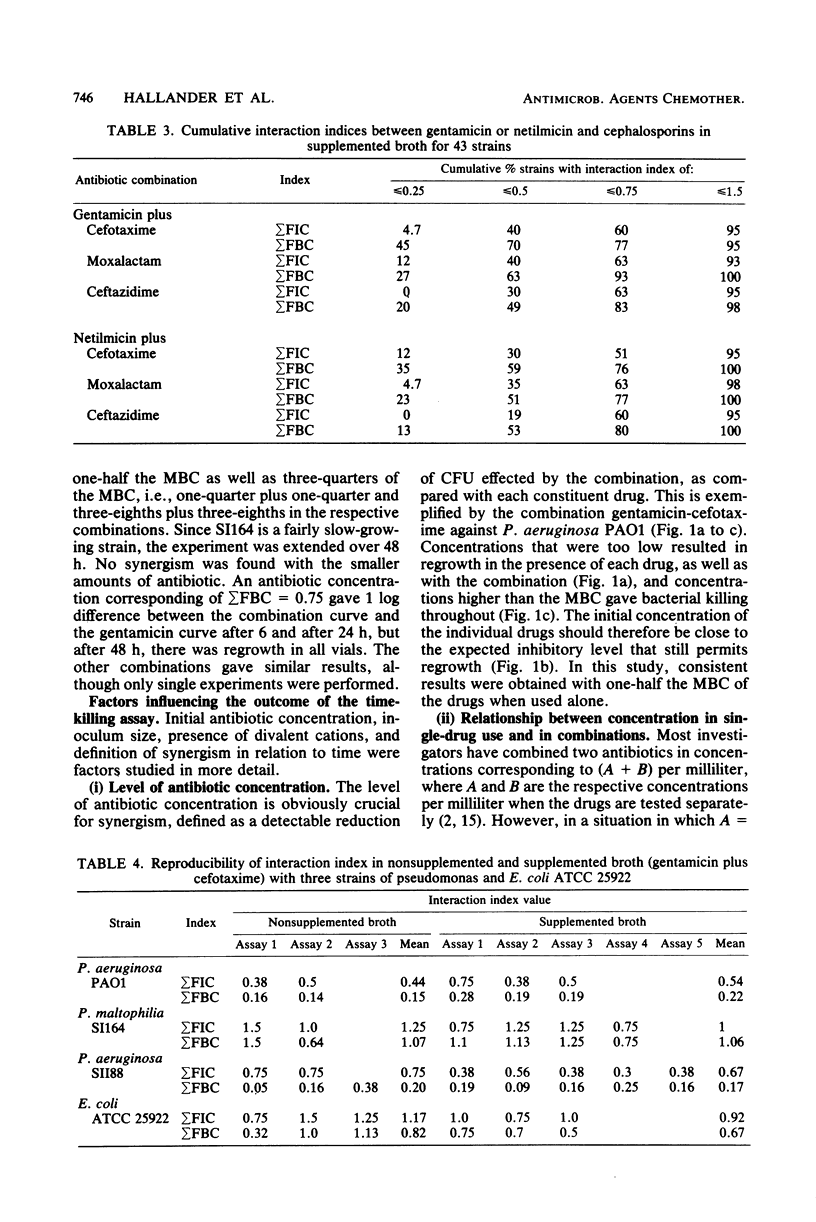

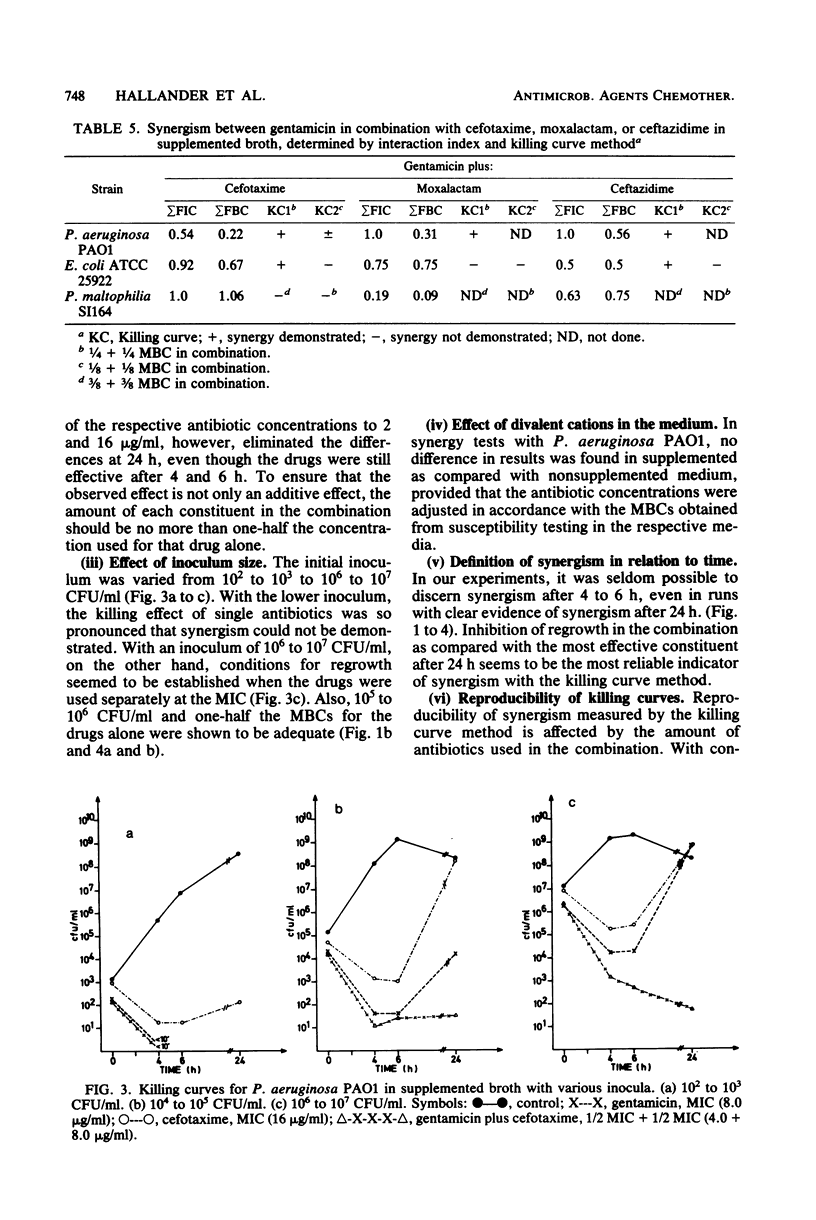

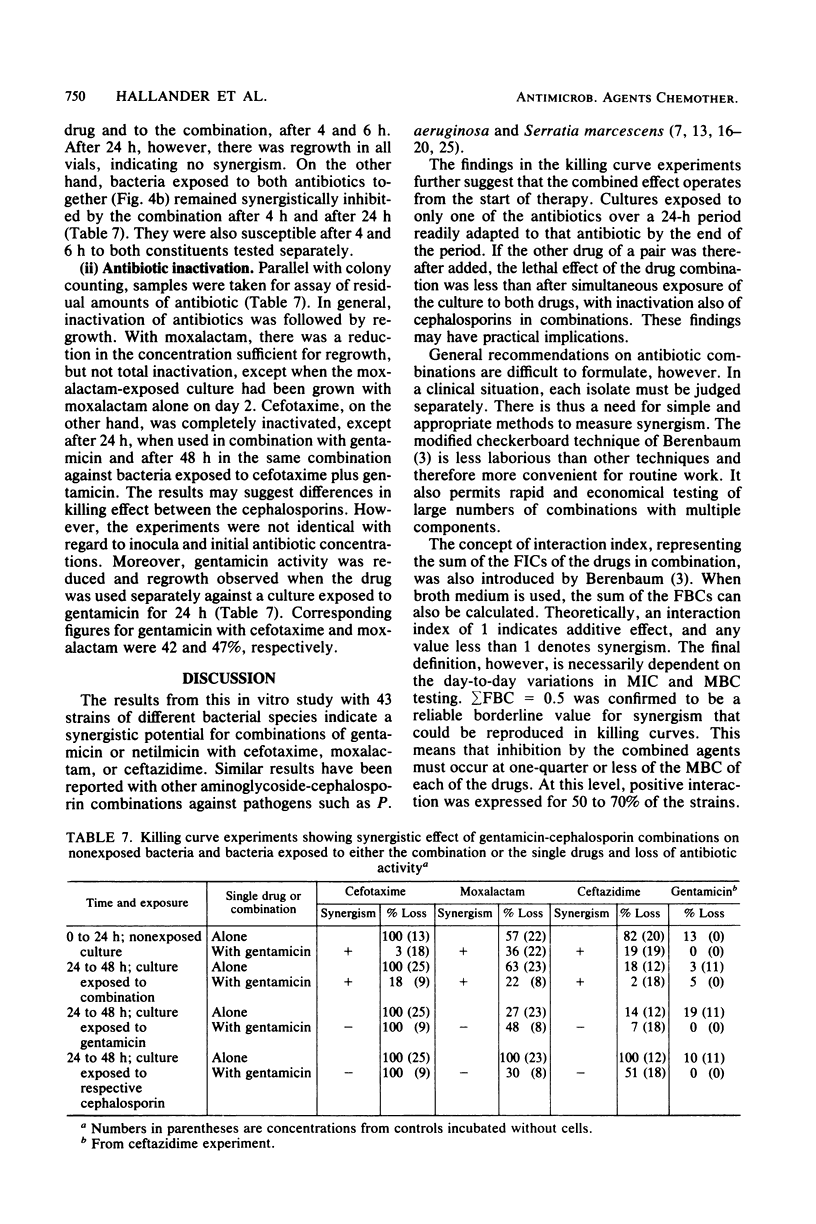
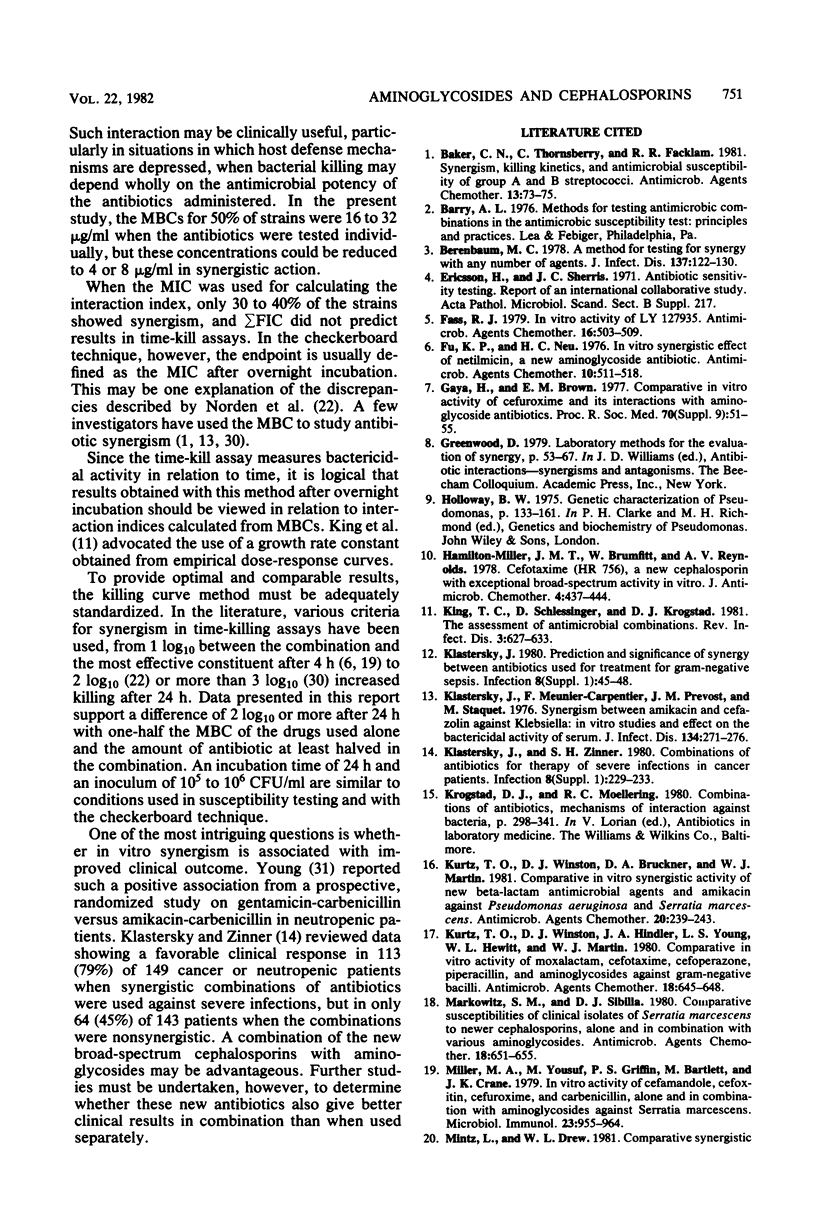
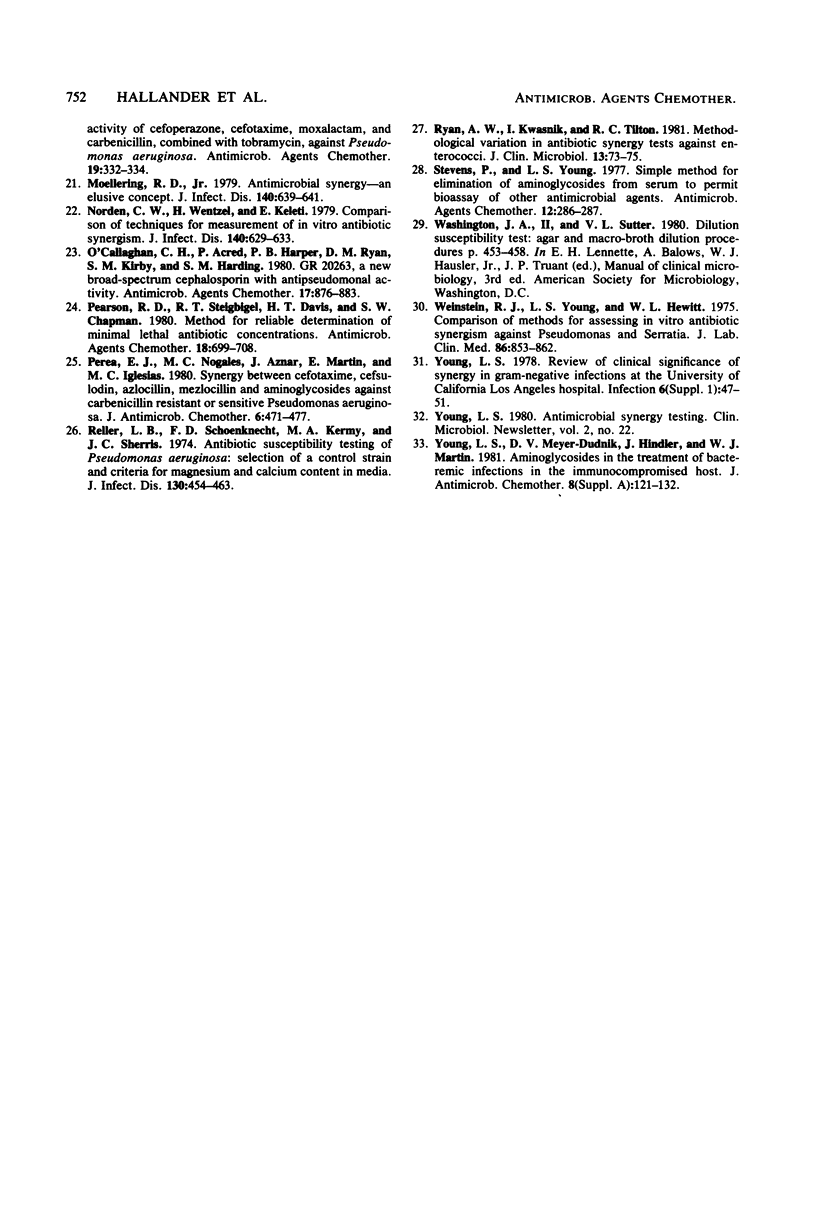
Selected References
These references are in PubMed. This may not be the complete list of references from this article.
- Berenbaum M. C. A method for testing for synergy with any number of agents. J Infect Dis. 1978 Feb;137(2):122–130. doi: 10.1093/infdis/137.2.122. [DOI] [PubMed] [Google Scholar]
- Ericsson H. M., Sherris J. C. Antibiotic sensitivity testing. Report of an international collaborative study. Acta Pathol Microbiol Scand B Microbiol Immunol. 1971;217(Suppl):1+–1+. [PubMed] [Google Scholar]
- Fass R. J. In vitro activity of LY127935. Antimicrob Agents Chemother. 1979 Oct;16(4):503–509. doi: 10.1128/aac.16.4.503. [DOI] [PMC free article] [PubMed] [Google Scholar]
- Fu K. P., Neu H. C. In vitro synergistic effect of netilmicin, a new aminoglycoside antibiotic. Antimicrob Agents Chemother. 1976 Sep;10(3):511–518. doi: 10.1128/aac.10.3.511. [DOI] [PMC free article] [PubMed] [Google Scholar]
- Gaya H., Brown E. M., Friedman P., Cox S. E. Comparative in vitro Activity of Cefuroxime and its Interactions with Aminoglycoside Antibiotics. Proc R Soc Med. 1977;70(Suppl 9):51–55. doi: 10.1177/00359157770700S910. [DOI] [PMC free article] [PubMed] [Google Scholar]
- Hamilton-Miller J. M., Brumfitt W., Reynolds A. V. Cefotoxime (HR 756) a new cephalosporin with exceptional broad-spectrum activity in vitro. J Antimicrob Chemother. 1978 Sep;4(5):437–444. doi: 10.1093/jac/4.5.437. [DOI] [PubMed] [Google Scholar]
- King T. C., Schlessinger D., Krogstad D. J. The assessment of antimicrobial combinations. Rev Infect Dis. 1981 May-Jun;3(3):627–633. doi: 10.1093/clinids/3.3.627. [DOI] [PubMed] [Google Scholar]
- Klastersky J., Meunier-Carpentier F., Prevost J. M., Staquet M. Synergism between amikacin and cefazolin against Klebsiella: in vitro studies and effect on the bactericidal activity of serum. J Infect Dis. 1976 Sep;134(3):271–276. doi: 10.1093/infdis/134.3.271. [DOI] [PubMed] [Google Scholar]
- Klastersky J. Prediction and significance of synergy between antibiotics used for treatment for gram-negative sepsis. Infection. 1980;Suppl 1:45–48. doi: 10.1007/BF01644935. [DOI] [PubMed] [Google Scholar]
- Kurtz T. O., Winston D. J., Bruckner D. A., Martin W. J. Comparative in vitro synergistic activity of new beta-lactam antimicrobial agents and amikacin against Pseudomonas aeruginosa and Serratia marcescens. Antimicrob Agents Chemother. 1981 Aug;20(2):239–243. doi: 10.1128/aac.20.2.239. [DOI] [PMC free article] [PubMed] [Google Scholar]
- Kurtz T. O., Winston D. J., Hindler J. A., Young L. S., Hewitt W. L., Martin W. J. Comparative in vitro activity of moxalactam, cefotaxime, cefoperazone, piperacillin, and aminoglycosides against gram-negative bacilli. Antimicrob Agents Chemother. 1980 Oct;18(4):645–648. doi: 10.1128/aac.18.4.645. [DOI] [PMC free article] [PubMed] [Google Scholar]
- Markowitz S. M., Sibilla D. J. Comparative susceptibilities of clinical isolates of Serratia marcescens to newer cephalosporins, alone and in combination with various aminoglycosides. Antimicrob Agents Chemother. 1980 Nov;18(5):651–655. doi: 10.1128/aac.18.5.651. [DOI] [PMC free article] [PubMed] [Google Scholar]
- Miller M. A., Yousuf M., Griffin P. S., Bartlett M., Crane J. K. In vitro activity of cefamandole, cefoxitin, cefuroxime, and carbenicillin, alone and in combination with aminoglycosides against Serratia marcescens. Microbiol Immunol. 1979;23(10):955–964. doi: 10.1111/j.1348-0421.1979.tb00526.x. [DOI] [PubMed] [Google Scholar]
- Moellering R. C., Jr Antimicrobial synergism--an elusive concept. J Infect Dis. 1979 Oct;140(4):639–641. doi: 10.1093/infdis/140.4.639. [DOI] [PubMed] [Google Scholar]
- Norden C. W., Wentzel H., Keleti E. Comparison of techniques for measurement of in vitro antibiotic synergism. J Infect Dis. 1979 Oct;140(4):629–633. doi: 10.1093/infdis/140.4.629. [DOI] [PubMed] [Google Scholar]
- O'Callaghan C. H., Acred P., Harper P. B., Ryan D. M., Kirby S. M., Harding S. M. GR 20263, a new broad-spectrum cephalosporin with anti-pseudomonal activity. Antimicrob Agents Chemother. 1980 May;17(5):876–883. doi: 10.1128/aac.17.5.876. [DOI] [PMC free article] [PubMed] [Google Scholar]
- Pearson R. D., Steigbigel R. T., Davis H. T., Chapman S. W. Method of reliable determination of minimal lethal antibiotic concentrations. Antimicrob Agents Chemother. 1980 Nov;18(5):699–708. doi: 10.1128/aac.18.5.699. [DOI] [PMC free article] [PubMed] [Google Scholar]
- Perea E. J., Nogales M. C., Aznar J., Martin E., Iglesias M. C. Synergy between cefotaxime, cefsulodin, azlocillin, mezlocillin and aminoglycosides against carbenicillin resistant or sensitive Pseudomonas aeruginosa. J Antimicrob Chemother. 1980 Jul;6(4):471–477. doi: 10.1093/jac/6.4.471. [DOI] [PubMed] [Google Scholar]
- Reller L. B., Schoenknecht F. D., Kenny M. A., Sherris J. C. Antibiotic susceptibility testing of Pseudomonas aeruginosa: selection of a control strain and criteria for magnesium and calcium content in media. J Infect Dis. 1974 Nov;130(5):454–463. doi: 10.1093/infdis/130.5.454. [DOI] [PubMed] [Google Scholar]
- Ryan R. W., Kwasnik I., Tilton R. C. Methodological variation in antibiotic synergy tests against enterococci. J Clin Microbiol. 1981 Jan;13(1):73–75. doi: 10.1128/jcm.13.1.73-75.1981. [DOI] [PMC free article] [PubMed] [Google Scholar]
- Stevens P., Young L. S. Simple method for elimination of aminoglycosides from serum to permit bioassay of other antimicrobial agents. Antimicrob Agents Chemother. 1977 Aug;12(2):286–287. doi: 10.1128/aac.12.2.286. [DOI] [PMC free article] [PubMed] [Google Scholar]
- Weinstein R. J., Young L. S., Hewitt W. L. Comparison of methods for assessing in vitro antibiotic synergism against Pseudomonas and Serratia. J Lab Clin Med. 1975 Nov;86(5):853–862. [PubMed] [Google Scholar]
- Young L. S., Meyer-Dudnik P. V., Hindler J., Martin W. J. Aminoglycosides in the treatment of bacteraemic infections in the immuno-comprised host. J Antimicrob Chemother. 1981 Jul;8 (Suppl A):121–132. doi: 10.1093/jac/8.suppl_a.121. [DOI] [PubMed] [Google Scholar]


